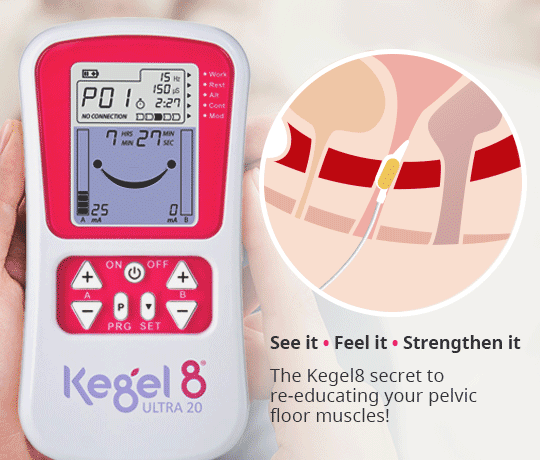
Pelvic organ prolapse affects 30-40% of women at some point in their lives, but nobody talks about it! This is a massive shame, as there are steps you can take to prevent it from happening that most women are unaware of.
Read on to learn all about this nasty condition and how you can make sure it doesn’t happen to you.
Symptoms of Prolapse
- A bulging sensation in the vagina, or something protruding from the vagina that needs to be pushed back in
- Discomfort during sex
- Incontinence: feeling like you need to pee all the time, never feeling like your bladder is empty or having frequent leaks of urine
It’s possible for have no prolapse symptoms but still have a pelvic organ prolapse; women sometimes discover that they have one during a cervical screening or other gynaecological appointment. There are different types of vaginal prolapse – a cystocele is when the bladder falls, a uterine prolapse is when your womb and cervix fall and a rectocele is a prolapse of the bowel.
A collapsed womb, bladder or bowel can happen due to various causes:
- Childbirth: vaginal birth can often cause a lot of damage to your pelvic floor, causing a womb prolapse
- Obesity: extra weight puts a lot of extra pressure on your pelvic floor, weakening it
- Age: the menopause can often cause pelvic floor weakness due to hormonal changes
- Hysterectomy: or other pelvic surgery can cause your pelvic floor muscles to weaken
- Heavy lifting, constipation, coughing and sneezing can all strain your pelvic floor and cause prolapse
Prolapse Treatment
The discomfort of a prolapse can be reduced by using a vaginal pessary – this is a small device that’s inserted into the vagina and worn throughout the day. It creates a ‘shelf’ in your body that holds everything up. In extreme cases prolapse surgery can be required. This either involves a hysterectomy, stitching the organs back into place or inserting vaginal mesh for extra support. However, surgery is only necessary in around 1 in 10 cases – the rest of the time you can reduce your prolapse with lifestyle changes.
How to Reduce your Risk of Pelvic Organ Prolapse
If you have any of the risk factors for a pelvic organ prolapse – and let’s face it, all women will at some point in their lives – it’s important to be proactive about prevention. Some of the little changes you can make are to maintain a healthy weight, eat a high fibre diet to avoid constipation and to make sure that you lift heavy things in a way that doesn’t cause strain.
The best way to prevent this condition is to do pelvic floor exercises for prolapse. By strengthening your pelvic floor you will make it easier for your body to hold up your organs. By doing this you can prevent or reduce the prolapse and stopping it from getting worse. The most effective way to do exercises for prolapse is by using a Kegel8 electronic pelvic toner. Using a pelvic toner is 50% more effective than doing manual prolapse exercises – so you’ll see better results in less time. Use the Kegel8 Ultra 20 Electronic Pelvic Toner’s prolapse programmes for just 12 weeks and see for yourself what a difference it makes!





